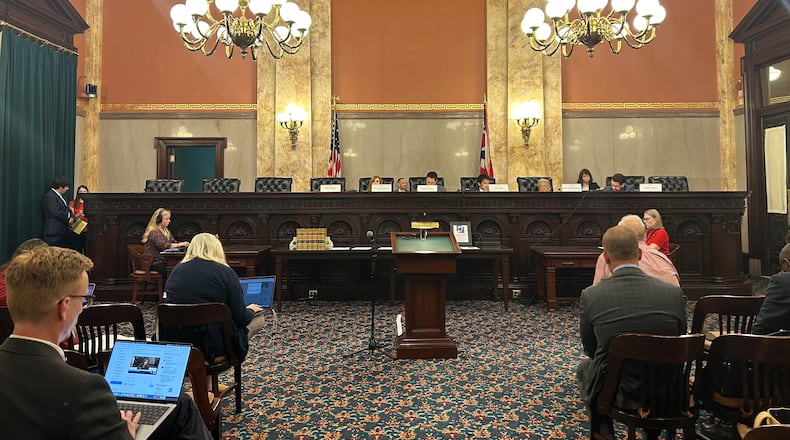Critics say the ballot board’s explanation does not touch on several areas of reproductive health that the amendment aims to protect, including contraception, miscarriage care, fertility treatment, and the decision to continue one’s own pregnancy. Instead, the explanation centers fully on abortion.
The approved summary also repeatedly uses the term “unborn child” instead of “fetus,” and says that that the amendment would block “citizens of the State of Ohio” — not the state itself — from impeding in Ohioans’ reproductive decision making.
The lawsuit filed by Ohioans United for Reproductive Rights echoes the requests of the Democrats on the Ohio Ballot Board, who asked that the ballot include the entire amendment, just a page long, instead of an explanation that is even longer. If the Ohio Supreme Court doesn’t want to take that on, the lawsuit asks that the court at least order the ballot board to correct the inaccuracies of the summary.
“Issue 1 was clearly written to protect Ohioans’ right to make our own personal health care decisions about contraception, pregnancy, and abortion, free from government interference,” said campaign spokesperson Lauren Blauvelt in a news release. “The summary that was adopted by the Ballot Board is intentionally misleading and fails to meet the standards required by Ohio law. Ohio voters deserve to see the full amendment language for Issue 1.”
At last week’s meeting, ballot board member and staunch anti-abortion Republican Sen. Theresa Gavarone, R-Bowling Green, called the proposed amendment deceptive and strongly spoke out against the amendment itself.
“As a woman and a mother, I consider it an abomination that we’re even talking about amending our constitution to allow for painful, late term abortions — an abomination. But that’s not why we’re here today. We’re here to create ballot language that accurately describes the proposed amendment, as written,” Gavarone said, before noting that she was proud to correct the record with the official ballot language.
Blauvelt saw it differently.
“The Ballot Board’s members adopted politicized, distorted language for the amendment, exploiting their authority in a last ditch effort to deceive and confuse Ohio voters ahead of the November vote on reproductive freedom,” she said.
Mike Gonidakis, president of Ohio Right to Life, issued a statement Monday in support of the ballot board’s language.
“The ballot board got it right with a scientifically accurate depiction of the abortion industry’s ballot language. Planned Parenthood is obviously worried that Ohioans are realizing that the language is dangerous and a bridge too far for even pro-choice women,” he said. “This weak legal challenge is clearly designed to sanitize their objective to enshrine late term abortion in our state Constitution. We fully expect the Ohio Supreme Court to reject this.”
Here’s what the ballot board’s summary says the amendment would do:
- Establish in the Constitution of the State of Ohio an individual right to one’s own reproductive medical treatment, including but not limited to abortion;
- Create legal protections for any person or entity that assists a person with receiving reproductive medical treatment, including but not limited to abortion;
- Prohibit the citizens of the State of Ohio from directly or indirectly burdening, penalizing, or prohibiting abortion before an unborn child is determined to be viable, unless the State demonstrates that it is using the least restrictive means;
- Grant a pregnant woman’s treating physician the authority to determine, on a case-by-case basis, whether an unborn child is viable;
- Only allow the citizens of the State of Ohio to prohibit an abortion after an unborn child is determined by a pregnant woman’s treating physician to be viable and only if the physician does not consider the abortion necessary to protect the pregnant woman’s life or health; and
- Always allow an unborn child to be aborted at any stage of pregnancy, regardless of viability if, in the treating physician’s determination, the abortion is necessary to protect the pregnant woman’s life or health


